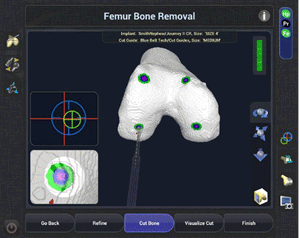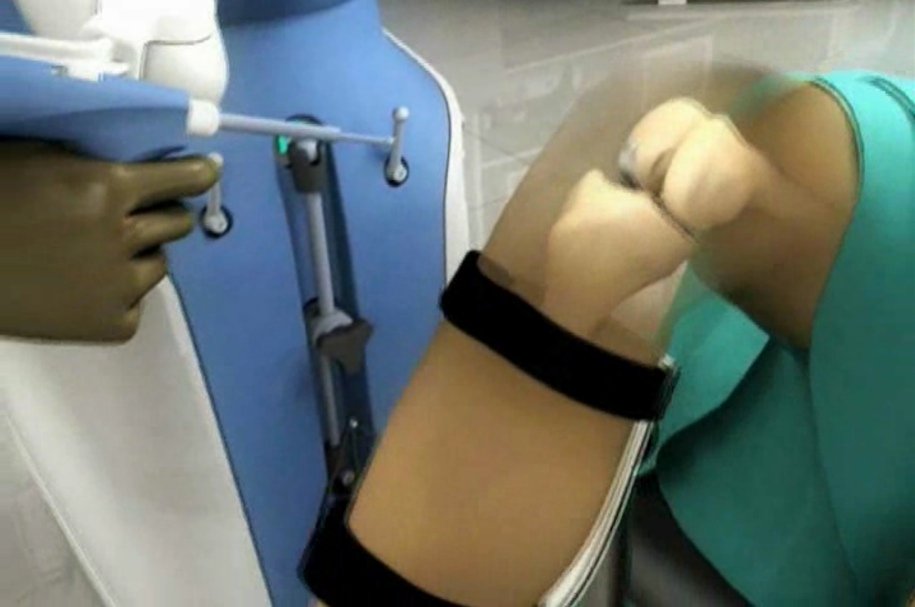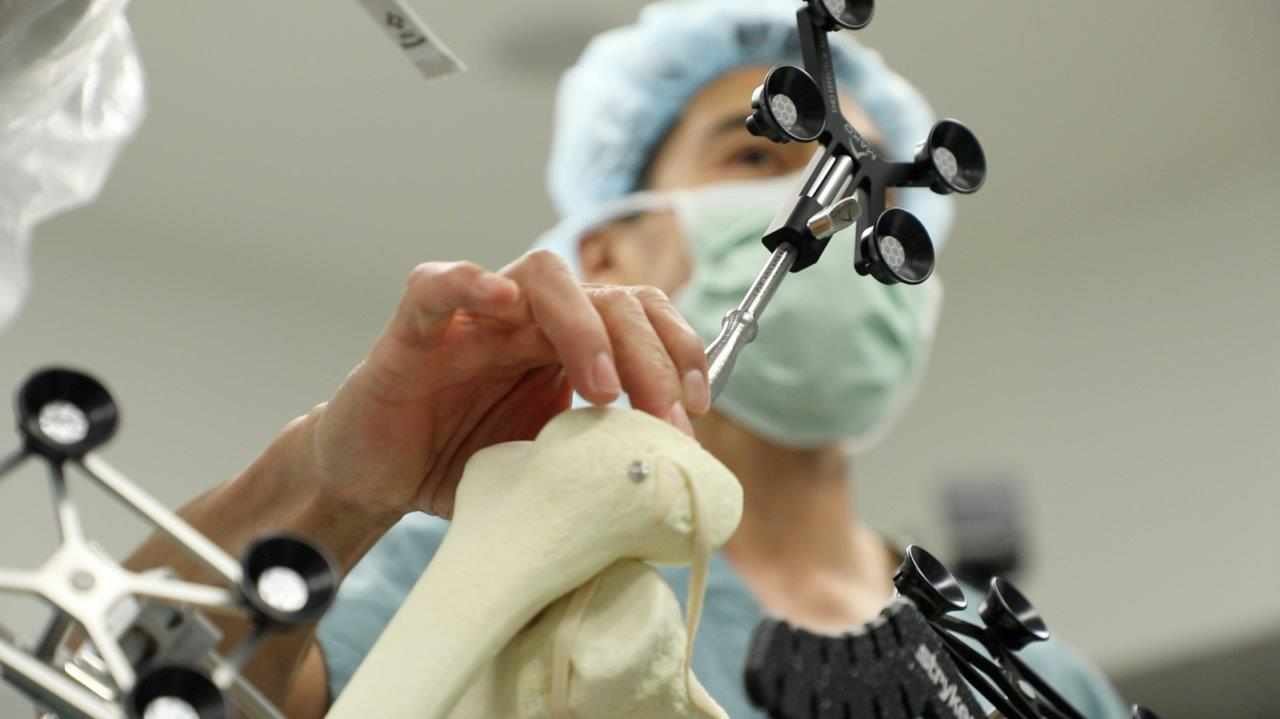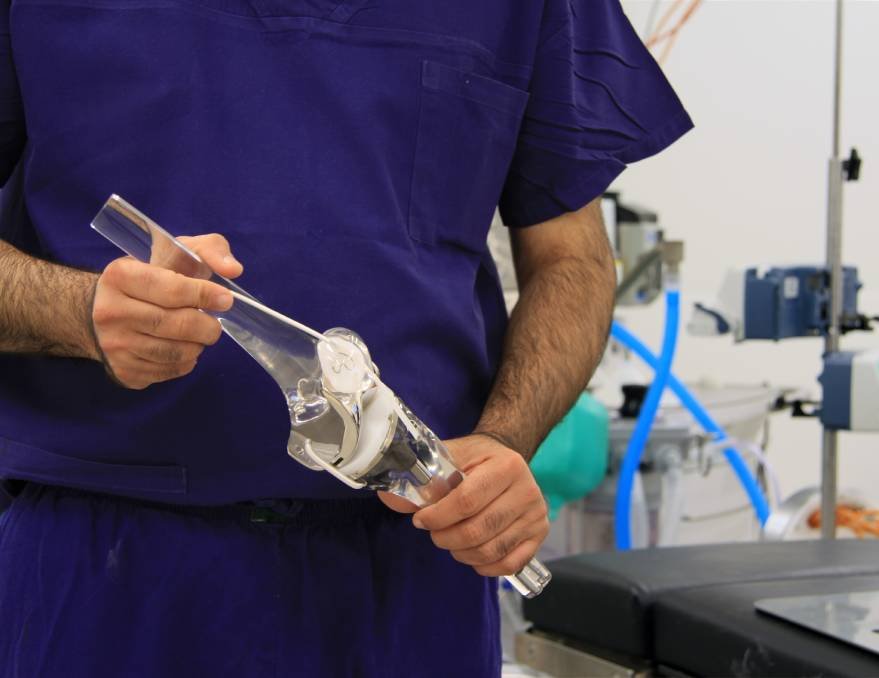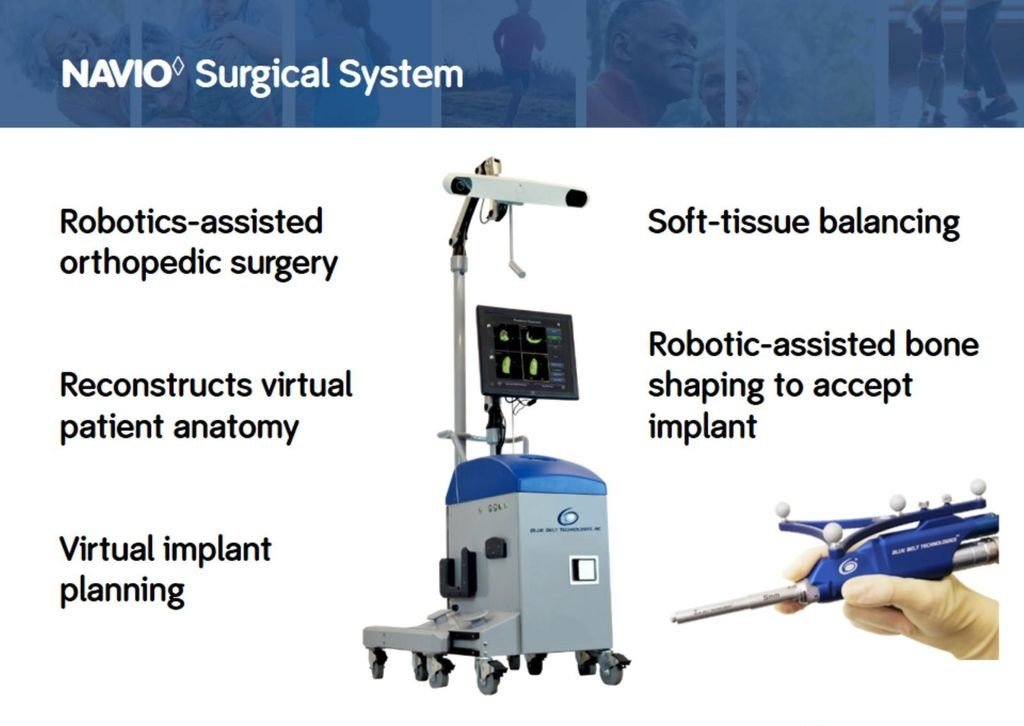Book An Appointment

 CORI ROBOTICS-ASSISTED KNEE REPLACEMENT SURGERY
CORI ROBOTICS-ASSISTED KNEE REPLACEMENT SURGERYYour knee replacement surgery is unique, based on your knee anatomy and the implant used. Designed to help ensure your knee replacement is positioned and aligned correctly, surgeons use the Cori Surgical System. Proper positioning of the implant is important because implant alignment is a crucial factor in determining how long your implant may last.

Eventually more advanced implant positioning techniques were introduced that used long rods drilled into the central canal of the femur (thigh bone). These rods provide an attachment point for surgical cutting guides. More recent improvements introduced CT (computerized tomography) scan/MRI image guidance to create an individualized computer-generated surgical plan for each patient.
The latest innovation is the Cori Surgical System, a robotics-assisted platform that uses CT-free technology for accurate implant sizing and positioning without the need for rods. The Cori Surgical System can be used for either a partial or total knee replacement procedure.

The Cori system offers two important benefits for people undergoing a knee replacement procedure. First, it helps your surgeon create a highly individualized plan that is specific to the unique shape and motion of your knee. Traditional planning may require CT scans, a series of images similar to x-rays that shows cross-sections of your knee. While other robotic-assisted platforms require CT scans, the Cori system works without them, meaning you are not exposed to the potentially harmful radiation experienced with this type of imaging.
The second benefit is robotic assistance. This combination of advanced technology is designed to help your surgeon and may result in more accuracy, giving you better long-term outcomes.
The Cori system is used for both partial and total knee replacement, which are distinctly different procedures. Here’s a bit more information on how the Cori system is used in these surgeries:
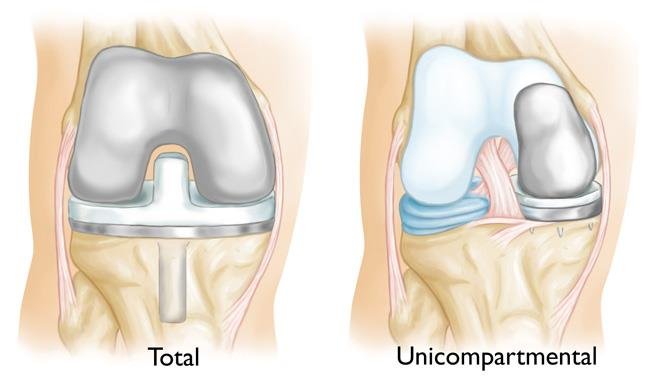




Individual results may vary. There are risks associated with any surgical procedure including Cori-enabled Knee Replacement. Cori is not for everyone. Children, pregnant women, patients who have mental or neuromuscular disorders that do not allow control of the knee joint, and morbidly obese patients and patients contraindicated for UKR, PFA and TKA should not undergo a Cori procedure. Consult your physician for details to determine if Cori is right for you.

 PARTIAL KNEE REPLACEMENT WITH THE CORI SURGICAL SYSTEM
PARTIAL KNEE REPLACEMENT WITH THE CORI SURGICAL SYSTEMFor people suffering from knee pain caused by osteoarthritis, whose damage is limited to a single compartment or area of the knee, partial knee replacement may be an option because it preserves healthy bone and ligaments while replacing the damaged area.The Cori Surgical System uses robotics-assisted technology to help tailor partial knee replacement procedures to the unique shape and motion of each patient’s knee anatomy.
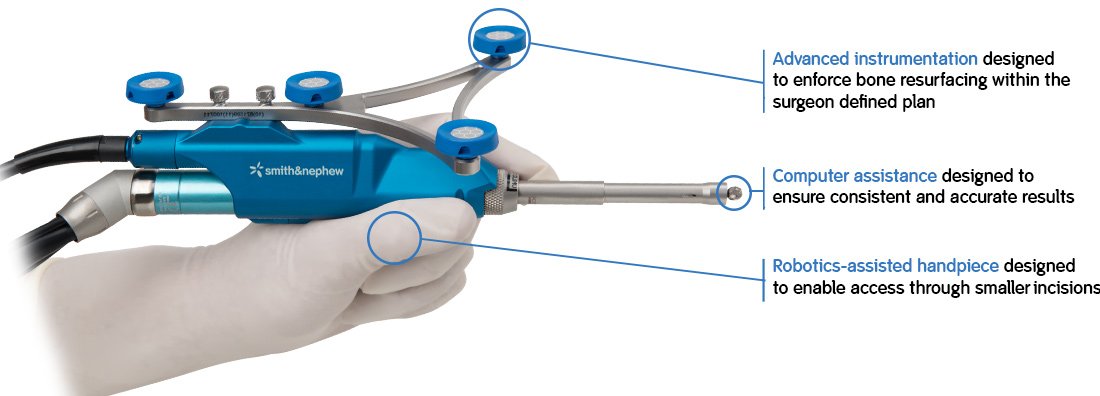
The Cori Surgical System addresses the challenge of partial knee replacement by using both computer and robotic assistance to accurately map the surface of your knee, align your implant to your anatomy, and physically remove the bone necessary to place your new implant.3 This added level of assistance is important because implant alignment is a crucial factor in determining how long the implant will last.
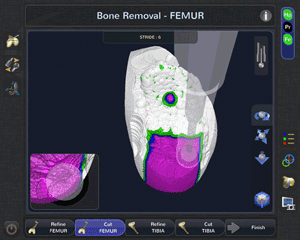

After all of the information about your knee is gathered and your surgical plan is created, your surgeon will use a robotics-assisted surgical tool (the Cori handpiece) to physically remove the damaged surface of your bone so that your new implant fits properly. Using the same 3D model of your knee, the handpiece is able to differentiate between the damaged areas that need to be removed, and the healthy areas that will remain. The Cori handpiece uses a burr that removes damaged bone for your implant.
The Cori system doesn’t replace your surgeon. Rather, it assists your surgeon by adding an extra layer of planning to the procedure.

By comparison, traditional surgical methods for partial knee replacement use a combination of long, metal IM (Intra-medullary) rods that are drilled into the central bone canal to determine anatomic alignment and mechanical cutting guides that help guide a saw blade as it removes the bone necessary to place the implant. The Cori Surgical System helps tailor your partial knee replacement procedure to your unique knee anatomy without the need for intramedullary rods or cutting guides
 TOTAL KNEE REPLACEMENT SURGERY WITH THE CORI SURGICAL SYSTEM
TOTAL KNEE REPLACEMENT SURGERY WITH THE CORI SURGICAL SYSTEMMore than 600,000 total knee replacement procedures are performed each year in the U.S. and more than 90% of these patients experience a dramatic relief in knee pain and are better able to perform common activities.1 The Cori Surgical System delivers robotics-assisted tools designed to help tailor your knee replacement surgery to the unique shape and motion of your knee.

Robotics-assisted knee replacement planning with the CORI System
